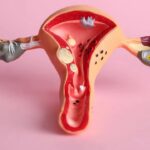Epidural analgesia for post-cesarean pain relief is a widely used medical technique that helps new mothers recover more comfortably after childbirth. While the procedure is commonly implemented in modern obstetrics, it still raises questions among patients due to concerns over possible side effects. This article offers a clear and professional explanation of the technique, its benefits, potential drawbacks, and appropriate indications—helping women make informed decisions during their postpartum recovery.
1. What Is Epidural Analgesia for Post-Cesarean Pain Relief?
After a cesarean section, many women experience significant postoperative pain due to the surgical incision and varying individual pain tolerance. In modern medicine, pain management techniques have evolved significantly to support recovery and enhance maternal well-being.
Epidural analgesia for post-cesarean pain relief involves administering a controlled amount of local anesthetic through a catheter inserted into the epidural space near the spinal cord. This medication works by blocking pain signals from reaching the brain, allowing the mother to feel minimal discomfort during the period the drug is active.
The anesthetic is delivered continuously using a pump, as prescribed by the attending physician, to ensure sustained pain relief. As the medication wears off, the patient will gradually regain sensation in the surgical area, typically within a few hours. Throughout the process, nurses and doctors closely monitor the mother’s vital signs and physical response, ensuring safety and prompt intervention if complications arise. Once pain control is no longer needed, the catheter is simply and comfortably removed.

Epidural anesthesia is an effective pain relief method for mothers after childbirth.
2. Evaluating the Effectiveness of Epidural Analgesia
2.1 Benefits of Epidural Analgesia for Post-Cesarean Pain Relief
Epidural analgesia for post-cesarean pain relief is considered a highly effective technique and is widely practiced in major hospitals. It offers several key benefits:
– Significant reduction in pain and discomfort following surgery, allowing mothers to feel more relaxed and at ease.
– Enhanced ability to breathe deeply, cough, and move around without severe pain—activities that are vital for preventing complications like pneumonia or blood clots.
– Reduced need for strong oral pain medications, minimizing common side effects such as dizziness, nausea, or excessive drowsiness.
– Improved appetite, mobility, and overall quality of life during recovery, contributing to faster healing and a smoother postpartum experience.
These advantages make epidural analgesia an appealing option for women seeking comprehensive pain control after cesarean delivery.

This technique offers several benefits for postpartum recovery.
2.2 Potential Drawbacks
Like all medical procedures, epidural analgesia for post-cesarean pain relief may involve some side effects. However, most are mild and manageable with proper care. Common temporary reactions include:
– Dizziness or chills shortly after the medication is administered.
– Difficulty urinating due to reduced bladder sensitivity, which may require short-term medical assistance.
These symptoms are generally short-lived and monitored closely by the healthcare team to ensure prompt treatment if needed. Patients are encouraged to discuss any concerns with their physician in advance.
3. When Is Epidural Analgesia Appropriate?
While epidural analgesia for post-cesarean pain relief is a safe and effective method, it is not suitable for every patient. The technique is typically recommended when:
– The patient is in good overall health and has no contraindications to regional anesthesia.
– There are no signs of allergic reaction to local anesthetics.
– There is no active infection at the injection site or systemic infection.
– The patient’s platelet count is within a safe range (typically above 75 G/L).
– The patient does not have severe blood clotting disorders or significant heart conditions.

Before delivery, mothers receive direct consultation with an obstetrician and anesthesiologist to assess health and medication tolerance for safety.
Before undergoing the procedure, mothers are carefully screened by an anesthesiologist. At Thu Cuc TCI, this includes a detailed consultation to assess the mother’s health status, medical history, and the specifics of her pregnancy.
During the postoperative period, patients receiving epidural analgesia are closely monitored by an experienced team of physicians and nurses. Their goal is to detect and manage any complications early, ensuring safety and comfort throughout the recovery process.
Epidural analgesia for post-cesarean pain relief offers a scientifically proven solution to manage postoperative discomfort effectively, enabling faster recovery and greater ease during the first days of motherhood. If you have questions or wish to explore whether this technique is right for you, contact the medical team at Thu Cuc TCI for personalized advice and professional support.








